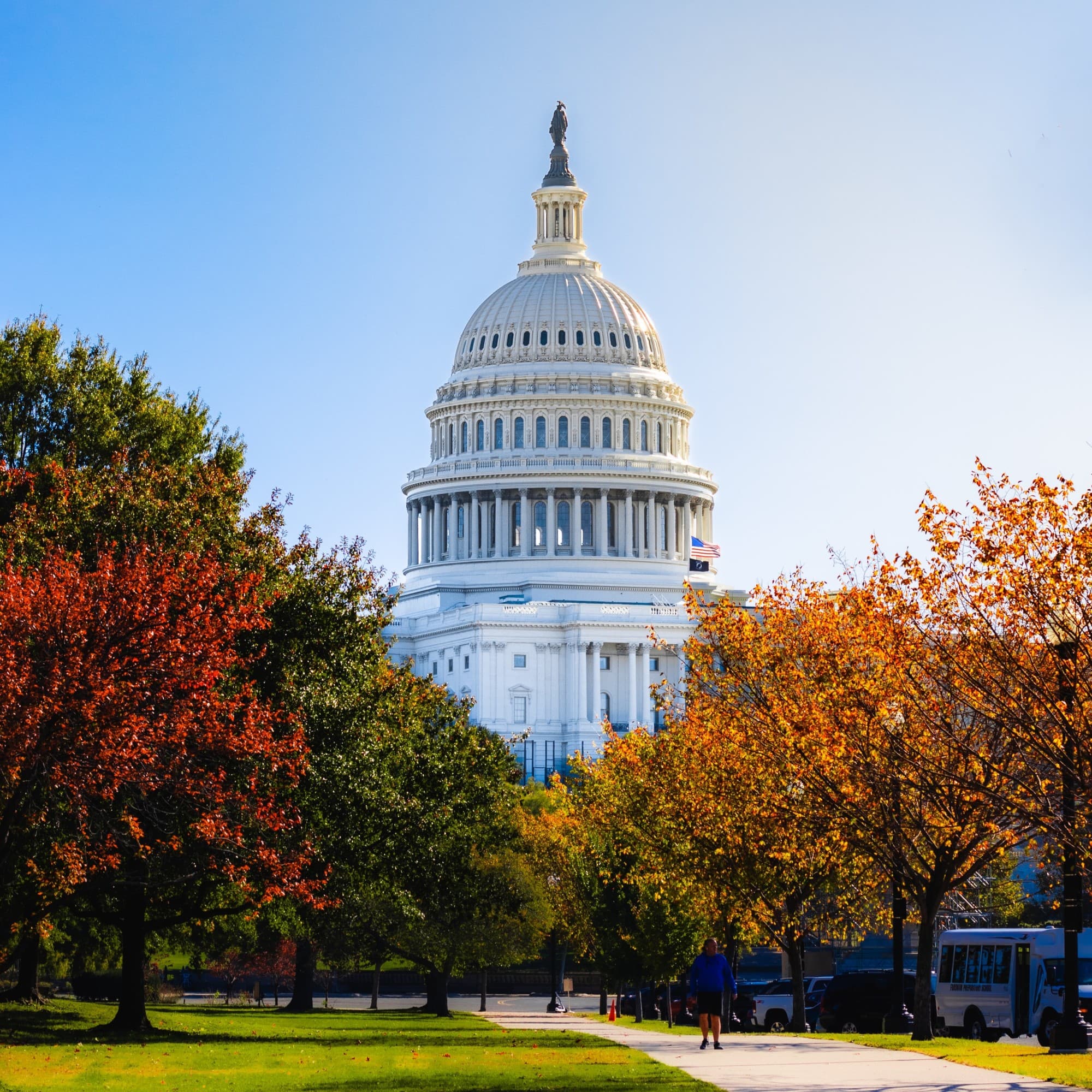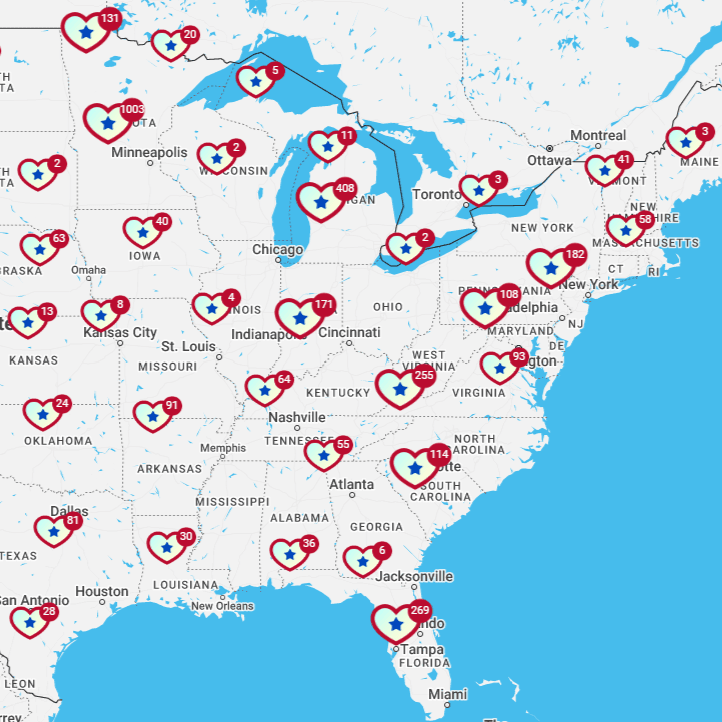
Why Can't the U.S. Have a Multi-Party System?
If you’re looking for an answer to the question “why can’t we have nice things,” the explanation lies in an examination of our two-party electoral system. Time after time, our leaders tell us that things like universal healthcare or tuition-free higher education are just not in the cards for people in America.
This is regardless of evidence that these programs succeed in other democracies around the world.
This is despite polling that suggests the people want these things nearly as much as they want more choice in their political representation.
However, a multi-party system is another nice thing that’s being kept away from the American people. In a country that prides itself on ideas like individual freedom, our leaders give us the illusion of choice while leveraging the shortcomings of a broken political system that benefits few outside of themselves and their cronies.
The funny thing is, we have a multitude of political parties in the United States. But, our system is dominated by an establishment duopoly that benefits from refusing to share the wealth in numerous ways.
Read on to learn why a multi-party system may be the answer to extreme partisanship, legislative stagnation, and corruption. We’ll also explore why such a system hasn’t been used in the United States and what we, the people, can do to change that.
America's Two-Party System: An Overview
The United States is a representative republic that operates under a two-party system, one which is primarily dominated by the Democratic and Republican parties. This system has been in place since the early 19th century and is deeply entrenched in the American psyche and our political landscape.
Rules of engagement, for lack of a better term, make it difficult for independent or third-party candidates to obtain the funding, institutional support, and reach of the establishment parties. The major consequence of this is the marginalization of smaller parties by rhetoric and rules, which leaves them struggling to gain traction in a system that only favors the two dominant parties.
One major factor is Duverger’s Law, a theory developed by French political scientist Maurice Duverger. This theory posits that the way people vote influences their decisions.
The way that our current system is set up, voters must overcome certain perceptions about the electability of candidates before any alternative voting system could take hold. Change would also require alterations to the rules set up by the establishment that erect barriers to voting.
Understanding Multi-Party Political Systems
A multi-party system is a type of political system where multiple political parties have the capacity to gain control of government offices, either separately or in coalition. For example, Party A might support a certain initiative, but it doesn’t have the votes to overcome opposition by party B. They can band together with minor parties C, D, and E to get enough support to pass the legislation.
This contrasts significantly with a two-party system, where two major political parties dominate the political landscape. Due to ideological differences and a bull-headed determination to keep the “other side” from winning, little gets passed.
In a multi-party system, smaller parties also have the opportunity to gain influence and enact policies, providing a broader range of political choices for the electorate.
Case Studies: Multi-Party Systems Around the World
Even though the differences are fairly clear-cut, it sometimes helps to see how multi-party systems are managed in other democracies. Here are four examples from disparate parts of the world that have one thing in common: they all use multi-party systems to get things done for their citizens.
#1: Switzerland
In Switzerland, multiple parties are represented in the Federal Assembly, the national legislature, and the executive branch. This system encourages coalition governments, ensuring that a wider spectrum of political views is represented in policymaking. Such a system fosters greater political diversity and often leads to more consensus-driven politics.
#2: Germany
Germany's parliamentary system allows for multiple parties to gain seats in the Bundestag. The country often sees coalition governments, which bring together diverse political ideologies. Parties like the Christian Democratic Union/Christian Social Union, Social Democratic Party, and The Greens are regular fixtures in German politics.
#3: India
India, the world's largest democracy, operates on a multi-party system with a myriad of regional and national parties. The Indian National Congress and Bharatiya Janata Party are major players, but regional parties also wield significant power, especially in state governments.
#4: Brazil
Brazil's political landscape is highly fragmented by numerous parties. However, their system allows smaller parties to gain representation in the National Congress. Although this can seem unstable and chaotic at times, the multi-party system in Brazil supports a more diverse political environment.
Multi-Party vs. Two-Party Systems
Overhauling our political system would be a huge undertaking, so it’s important to consider whether the pros of multi-party politics outweigh the disadvantages. Here, we break it down point by point.
Pros of a Multi-Party System:
Diverse Representation: Ensures a wider range of political views and interests are represented in government.
Coalition Governments: Often leads to consensus-driven governance that forces parties to collaborate.
Increased Voter Choice: Offers voters more options beyond the traditional binary choice available in a duopoly.
Cons of a Multi-Party System
Government Stability: Coalitions can be fragile, leading to less stable governments.
Decision-Making: Legislative activity can be slower since a consensus is needed among diverse groups.
Extremist Parties: More likely to gain a foothold, potentially leading to dissent or polarized politics.
Pros of a Two-Party System
Stability: Typically results in more stable governments.
Efficiency in Decision-Making: Sometimes easier to pass legislation with fewer parties involved.
Simplicity for Voters: Easier for voters to understand and engage with fewer choices.
Cons of a Two-Party System
Limited Choices: Reduces the political spectrum to two dominant viewpoints.
Marginalization of Minorities: Smaller groups and opinions often remain underrepresented.
Polarization: Can lead to a deeply polarized political environment.
Legislative Gridlock: With only two parties, votes are often too close and divided along ideological lines that partisan politicians fear to cross.
Barriers to a Multi-Party System in the United States
The transition to a multi-party system in the United States faces several significant barriers. These are some of the same barriers that keep independent candidates from making a serious showing in national elections, and the establishment works hard to undermine the independent movement by keeping these barriers in place.
As it stands now, these are the main roadblocks standing in the way of instituting a multi-party system in the United States:
Electoral System: The U.S. largely employs a 'winner-take-all' electoral system, where the candidate with the majority of votes wins the election. This system inherently disadvantages smaller parties, which might have substantial support but not enough to overcome the Electoral College or win a majority in any given district.
Political Culture: The U.S. political culture has a long history of supporting a two-party system. This tradition creates a psychological barrier for voters, who often view a vote for a third party as wasted or as a means of indirectly supporting their least preferred of the two major parties.
Legal and Institutional Hurdles: There are numerous legal and institutional barriers that make it challenging for new parties to emerge. This includes difficult ballot access laws in many states and the lack of public funding for smaller parties.
Media Coverage: Mainstream media in the U.S. predominantly focuses on the two major parties, often sidelining smaller parties and independent candidates. This lack of exposure makes it harder for these parties to gain public recognition and support.
Efforts Towards Reform
Despite these barriers, there are ongoing efforts to reform the system to allow for a more representative political landscape:
Electoral Reform Advocacy: Groups like FairVote advocate for electoral reforms such as ranked choice voting and proportional representation. These systems allow for a more accurate reflection of the electorate's preferences and can help smaller parties gain representation.
Legal Challenges: Some parties and organizations are challenging the legal barriers to third-party participation, arguing for more equitable ballot access laws and campaign finance rules.
Grassroots Movements: Grassroots movements in the U.S. are pushing for greater political diversity. These movements are a crucial element in changing the political culture and making the idea of a multi-party system more palatable to the American public.
Educational Campaigns: Education plays a key role in electoral reform. By educating the public about the benefits of a multi-party system and how it works in other countries, reformers hope to build broader support for systemic changes.
Final Thoughts
There’s no doubt that the United States faces significant challenges in transitioning to a multi-party system. However, the increasing awareness of its benefits and the growing movements advocating for electoral reform suggest that change is possible.
The success of multi-party systems in countries like Switzerland highlights that the potential is high for a more inclusive and representative form of governance. As popular discontent grows and reformers continue to work towards dismantling the barriers to a multi-party system, the American political landscape is gradually shifting towards a more diverse and dynamic structure.
Support the Movement Toward a More Representative Political System
The key to diversity in government is to welcome multiple viewpoints. By transitioning away from the two-party system, we can create a truly representational political system that reflects the will of the people.
GoodParty.org is at the forefront of building an independent movement in America, and we welcome the voices and viewpoints of those who advocate for change. Join us today!
Learn more about how GoodParty.org is empowering Independent candidates to run for office, win elections, and serve their communities.
